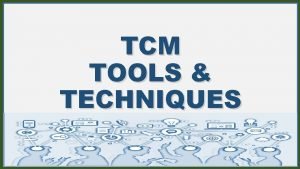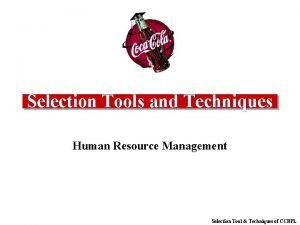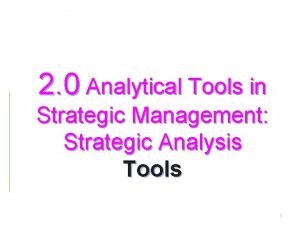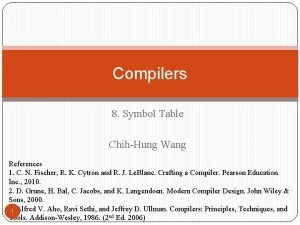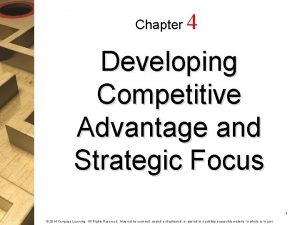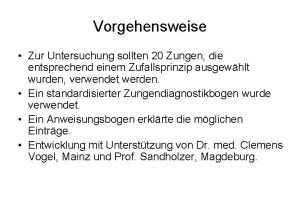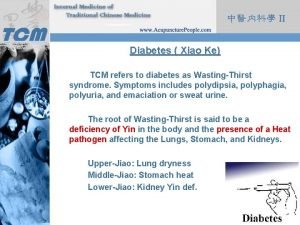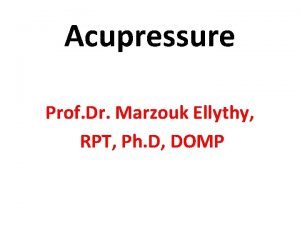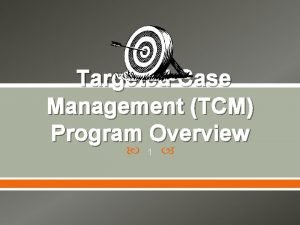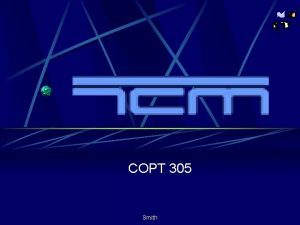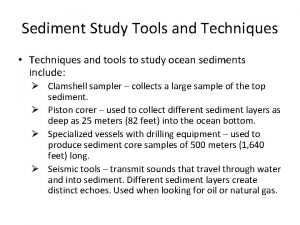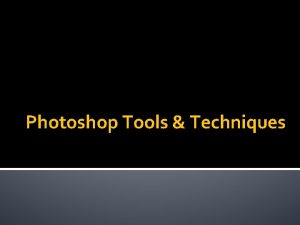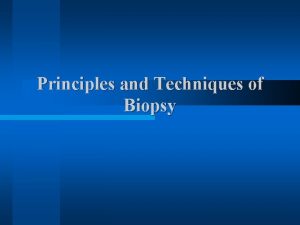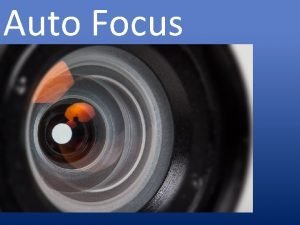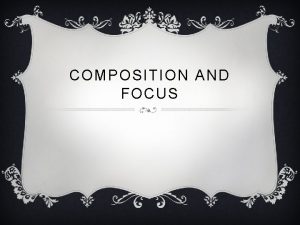TCM TOOLS TECHNIQUES TCM PRINCIPLES Resource Focus Strategic













- Slides: 13

TCM TOOLS & TECHNIQUES

TCM PRINCIPLES • Resource Focus • Strategic Context • Future outlook • Integration with other Initiatives • Learning and Innovation • Enterprise wide Involvement • Aligned to Policy Development(PD) • Process Orientation • Performance Orientation

TCM PROCESSES Securing Governance Structure IT Enabled architecture for capturing Cost Information Calibrating TCM competency skills amongst employees

WAYS OF COST ANALYSIS • Functional costs-material, labour etc. , • Departmental costs • Process methods • Direct and Indirect • Fixed and variable-marginal and semi variable • Activity based costs • Capital and Revenue • Total costs • Lifecycle • Cost of Ownership • Imputed and Indeterminate

TCM TOOLS q Variance Analysis q Target Costing q Cost driver Analysis q Risk Articulated Cost structures q Cost of Quality q Lifecycle Costing q Input Output Balance q Customer cost & Profitability q Kaizen Costing reporting q Total Cost of Ownership(TCO) q Value Chain costing q Activity cost management q Capacity cost management q Continuous Improvement q Capital cost analysis q Performance Cost Management

TCM TOOLS • TCM tools are deployed in a business to accelerate ‘cost competitiveness’ by generating desirable outcomes of costs, price, value and profit. • Tools also involve technicalities of measuring resources in business with both accounting and nonaccounting information • Entire spectrum of ‘cost management’ architecture – measuring, managing, reporting, analyzing, controlling, course corrections, predicting and estimating costs across value chain of business – is enabled by an array of TCM tools. • Contemporary businesses are largely driven by several market and customer dynamics – complexity and variety in business processes, product and customer portfolios. • Businesses manage ‘costs’ associated with both current and future activities and application of TCM tools scopes its deployment accordingly. • TCM tools can accordingly be classified into basic (operational) and advanced (strategic). Operational tools are used for Day-to Day simplistic analysis. Leadership vision of achieving future business goals is addressed through strategic TCM tools

Application / Scope TCM TOOLS Business. OPERATIONAL Context TCM Tool Benefits Resource control Business as usual Variance analysis Resource conservation Expense control Product/Customer quality Resource balance Product cost improvements Total cost of buying Business as usual Cost driver analysis Cost of Quality Business as usual Input-Output balance Profitability challenges Kaizen costing Reduction of NVA Minimizing quality deviations Yield improvement Product profit improvement Business as usual Reduced cost of inputs Linking Strategy Resource focus at activity level Market place, customer focused assured cost management journey People , KRIs and efficiencies Operational cost Management Product/Customer Overall cost optimization Total Cost of Ownership (TCO) Business as usual Activity cost management Profitability Challenges Continuous Improvement Talent to Performance costs management

TCM TOOLS - STRATEGIC Application / Scope New product design & development Aspirational cost structure Business Context New product introduction BC Plan and cost implications TCM Tool Target costing Benefits Optimizing 80% of product costs at design stage. Risk articulated Focused strategic initiatives in cost structure high risk / high cost areas of business Total Cost Visibility over Gaining competitive Life Cycle Economic analysis of product life cycle advantage Costing (LCC) alternatives that impact current and future product costs Customer profitability Wide customer Customer cost / profitability portfolio & profitability correction reporting Value chain of business Creating cost and Value chain Mapping cost pressures across (Design to Selling) competitive advantage costing value chain for rectification Global cost review Competitive advantage Capacity Cost Significant inputs on strategic sourcing & capacity mgmt. Optimization of overall Long-term competitive Capital cost Different capital movement capital advantage

PRICING STRATEGIES Demand (Skimming) Pricing • Introduction and growth of life cycle • What the market will bear • Works under conditions of no competition Cost-plus (Penetration) Pricing • Maturation stage of life cycle • Minimum acceptable price • Appeals to a mass market with objective of sales increase

PRICING STRATEGIES Survival Pricing • Price remaining capacity at marginal cost Market share Pricing • Used to take market share from competitors Social Responsibility Pricing • Forgoes sales and profits - puts society first Rule-of-Thumb (Myopic) Pricing • Formula - DM + DL + 40% Buy-in (Foot in the door) Pricing • Cover VC only

MEASURES OF PRICE MANAGEMENT EFFECTIVENESS • Types of measures include: Ø Percent improvement of price paid over inflation Ø Percent improvement of price paid vs. prior year Ø Target prices achieved Ø Ratio of actual price change improvement to comparable market index change Ø Purchase cost improvement as % of cost of goods sold Ø Total delivered cost reduction Ø Inventory cost reduction Ø Transportation cost reduction

SUMMARY • A first step to cost management is understanding the total volume of sales and relationship to suppliers costs • Suppliers use different pricing strategies which may not have any relationship to actual costs • A price index is a good way to understand pricing trends • Different approaches to reducing costs are possible

a h T y k n ! u o
 Tcm tools
Tcm tools Hr selectietool
Hr selectietool Nicholls mission & core competencies
Nicholls mission & core competencies Yacc symbol table
Yacc symbol table Language
Language Integrated cost leadership/differentiation strategy
Integrated cost leadership/differentiation strategy Differentiation cost leadership
Differentiation cost leadership Actor focus vs object focus
Actor focus vs object focus Developing a firm's strategy canvas focuses on
Developing a firm's strategy canvas focuses on Zunge zittert beim herausstrecken normal
Zunge zittert beim herausstrecken normal 同善医院中医部医生
同善医院中医部医生 Dr huafeng shen
Dr huafeng shen Cun measurements tcm
Cun measurements tcm Programme tcm
Programme tcm
